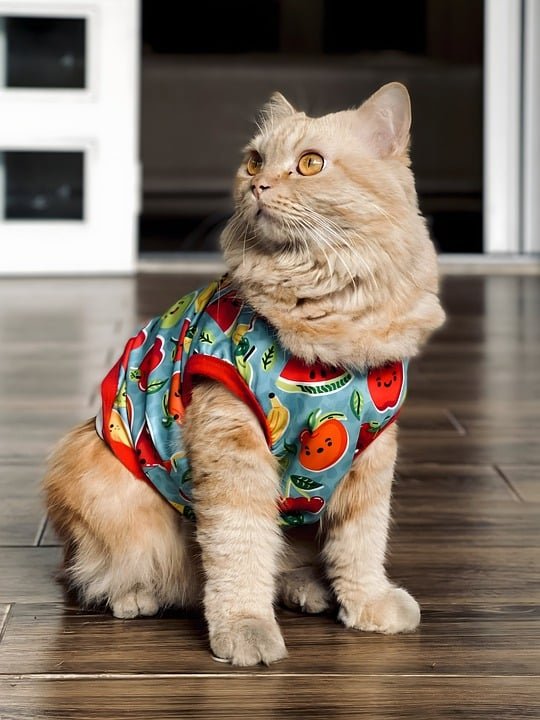
Understanding the Unique Needs of Long-Haired Cats
Long-haired cats, such as Persians, Maine Coons, and Ragdolls, have unique grooming needs due to their coat length and density. Their fur is more prone to tangling and matting, which can trap dirt, debris, and even parasites. Regular grooming helps prevent these issues, ensuring that the cat’s coat remains healthy, shiny, and free from knots.
Essential Grooming Tools
To effectively groom a long-haired cat, having the right tools is crucial. Here are some essentials every cat owner should consider:
- Wide-Toothed Comb: Ideal for detangling and smoothing out knots without pulling on the cat’s sensitive skin.
- Slicker Brush: A slicker brush helps remove loose hair and prevent matting. It’s especially useful for reaching the undercoat.
- Flea Comb: This fine-toothed comb is perfect for checking for fleas and removing any debris close to the skin.
- Mat Splitter: For stubborn mats, a mat splitter can safely break them apart without cutting the fur.
- Grooming Scissors: Blunt-tipped scissors are essential for trimming excess fur around sensitive areas.
- Cat-Safe Detangler Spray: A detangler can make combing easier and less stressful for your cat.
Step-by-Step Grooming Techniques
Preparation
Before starting the grooming process, ensure your cat is calm and comfortable. Choose a quiet room free from distractions and gather all necessary tools within reach. Offering treats and gentle strokes can help set the mood and make the experience more pleasant for your cat.
Brushing the Coat
Begin by using a wide-toothed comb to gently work through the cat’s coat. Start at the head and move towards the tail, paying extra attention to areas prone to matting, such as behind the ears, under the legs, and around the belly. Use short, gentle strokes and be patient, especially if you encounter knots.
Addressing Mats and Tangles
If you discover a mat, hold the fur close to the skin to prevent pulling and use the mat splitter to carefully break it apart. For smaller tangles, a slicker brush might suffice. Never attempt to cut out a mat with scissors, as this can lead to accidental injury.
Brushing the Undercoat
The undercoat is where most shedding occurs, and it’s vital to keep it tangle-free. Use the slicker brush to gently remove loose fur and prevent mats from forming. Regular brushing of the undercoat also reduces shedding and hairballs.
Trimming Excess Fur
Occasionally, trimming may be necessary to maintain hygiene and comfort. Use grooming scissors to trim fur around the bottom, paws, and any other areas where it might drag on the ground or become soiled. Always cut conservatively and ensure your cat is relaxed during the process.
Bathing Long-Haired Cats
While not all cats require frequent baths, long-haired breeds may benefit from occasional cleaning to remove dirt and oils. Use a cat-specific shampoo and ensure the water is lukewarm. Gently massage the shampoo into the fur, avoiding the face and ears, and rinse thoroughly. Towel dry the cat immediately and use a blow dryer on a low setting if your cat tolerates it.
Dealing with Hairballs
Hairballs are a common issue for long-haired cats due to the amount of fur they ingest while grooming themselves. Regular brushing significantly reduces the amount of loose hair and, consequently, the frequency of hairballs. Incorporating a hairball control diet or supplements can also be beneficial.
Maintaining a Consistent Grooming Routine
Consistency is key when it comes to grooming long-haired cats. Establish a routine that fits your schedule, aiming for at least two to three grooming sessions per week. Regular grooming not only keeps your cat’s coat healthy but also offers an opportunity to check for any abnormalities, such as lumps, parasites, or skin irritations.
Building Trust with Your Cat
Grooming sessions should be a bonding experience rather than a chore. Approach your cat with patience and gentle care. Positive reinforcement, such as treats and praise, can help create a positive association with grooming. Over time, your cat will become more comfortable with the process, making it easier for both of you.
When to Seek Professional Grooming Services
In some cases, professional grooming services may be necessary, particularly for cats with severe matting or those who are uncooperative during grooming sessions. Professional groomers have the experience and tools to handle these situations safely and effectively. Additionally, they can offer services such as nail trimming and ear cleaning.
Conclusion
Mastering long-haired cat grooming techniques requires time, patience, and commitment. By understanding the unique needs of long-haired breeds and using the right tools and techniques, you can ensure your feline friend remains healthy, comfortable, and stunning. Regular grooming not only prevents health issues but also strengthens the bond between you and your cat, making it a rewarding experience for both parties.
#ChatGPT assisted in the creation of this article.






